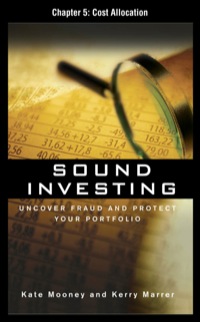Question
1. A company's contribution margin is $90 per unit at a sales level of 5,400 units. The company's operating income is $37,000. The company's operating
1. A company's contribution margin is $90 per unit at a sales level of 5,400 units. The company's operating income is $37,000. The company's operating leverage is closest to _____. (Round-off the answer to one decimal place.)
a.14.9
b.13.1
c.12.4
d.14.0
2. The break-even point is:
a.the same for every company in the same industry.
b.the point where a company's profits are maximized.
c.the point where total revenue equals total cost.
d.the point where sales revenues equal variable costs.
3. Burlywood Company sells two products that are expected to produce total revenue of $198,846 and total variable cost of $129,250 next year. Total fixed cost is expected to equal $44,050.
Determine the break-even point in sales dollars for Burlywood. Round all ratios to two decimal places.
a.$228,831
b.$125,857
c.$44,050
d.$251,714
4. The margin of safety is:
a.the same as gross margin.
b.the difference between sales and target profit.
c.the amount by which sales should be increased to generate a profit.
d.the units sold or the revenue earned above the break-even volume.
5. In general, assuming that fixed costs remain unchanged, the contribution margin ratio can be used to find the:
a.profit impact of a change in customer specifications.
b.number of units sold in the previous period.
c.profit of the next five reporting periods.
d.profit impact of a change in sales revenue.
6. Which of following equations is used to obtain the total change in profits from a change in revenues?
a.Change in Profits = Contribution Margin Ratio Change in Sales
b.Change in Profits = Variable Cost Ratio Total Sales
c.Change in Profits = Contribution Margin Ratio Total Sales
d.Change in Profits = Variable Cost Ratio Change in Sales
7. Carnelian Company sells bicycles at $100 each. Variable cost per unit is $75, and total fixed cost is $155,125. Calculate the sales that Carnelian must make to earn an operating income of $23,500.
a.$238,167
b.$243,100
c.$714,500
d.$624,200
8. Gamma Company's projected sales for the coming year is $24,000,000. It has total variable cost of $10,800,000. Annual fixed operating costs amount to $11,880,000. Gamma's contribution margin ratio is:
a.47%.
b.55%.
c.45%.
d.52%.
9. Contribution margin is the difference between:
a.variable expense and operating income.
b.sales and variable expense.
c.variable expenses and fixed expense.
d.sales and fixed expense.
10. The relative combination of products being sold by a firm is:
a.the unit selling price times the number of units sold.
b.the package contribution margin.
c.the unit variable cost times the number of units sold.
d.sales mix.
11. In cost-volume-profit analysis, assuming price and total fixed costs remain the same, any increase in unit variable costs will mean:
a.a higher gross margin.
b.a higher gross operating margin.
c.a higher contribution margin.
d.a higher break-even point.
12. Which of the following is true of direct fixed expenses?
a.These costs change with a change in sales price.
b.These costs will continue to exist even if one segment or product is eliminated.
c.These costs can be traced to a particular segment.
d.These costs change in accordance with the number of units produced.
Step by Step Solution
There are 3 Steps involved in it
Step: 1

Get Instant Access to Expert-Tailored Solutions
See step-by-step solutions with expert insights and AI powered tools for academic success
Step: 2

Step: 3

Ace Your Homework with AI
Get the answers you need in no time with our AI-driven, step-by-step assistance
Get Started


